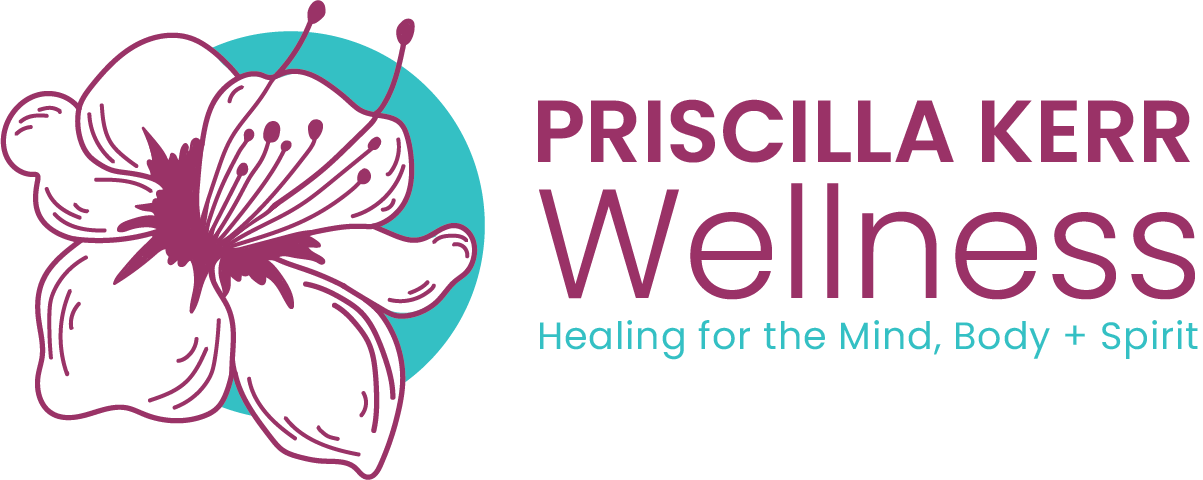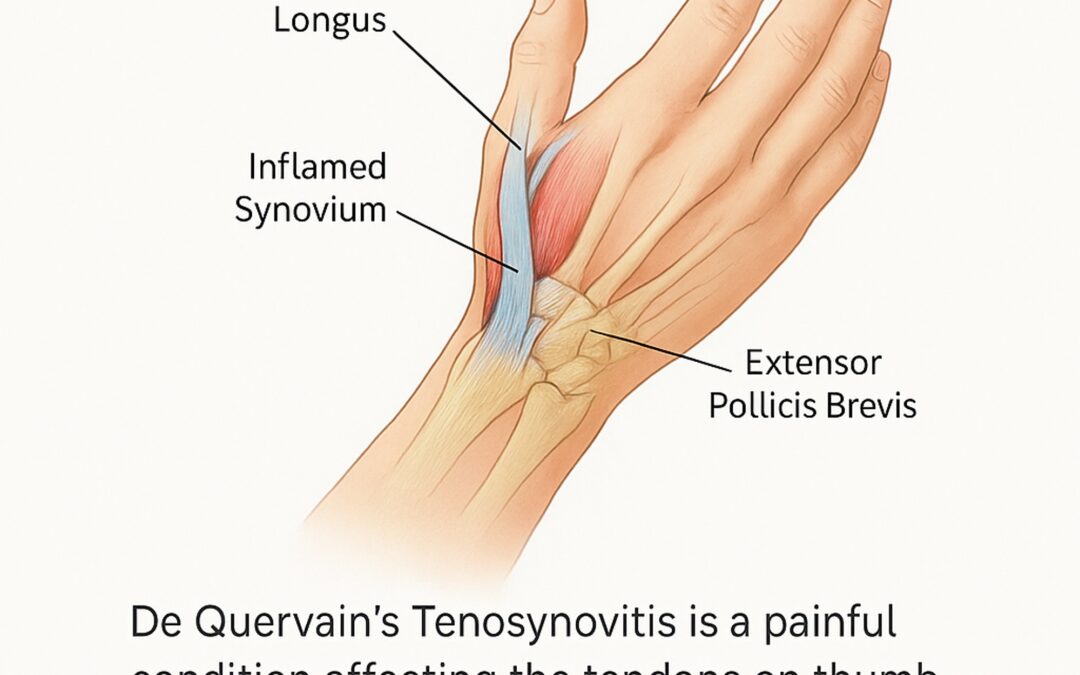(Pronounced “dih-kwer-VAIN ten-oh-sine-oh-VIE-tis”)
De Quervain’s Tenosynovitis is a common yet painful condition that affects the tendons on the thumb side of the wrist. Patients often experience sharp or aching pain when turning the wrist, grasping objects, lifting items, or making a fist. Over time, the pain can interfere with daily activities — even something as simple as holding a coffee cup or using a smartphone.
At Priscilla Kerr Wellness in Winnipeg, our integrative approach combines Traditional Chinese Medicine (TCM) acupuncture and massage therapy to naturally reduce pain, restore mobility, and prevent recurrence.
Understanding De Quervain’s Tenosynovitis
De Quervain’s occurs when two key tendons — the Abductor Pollicis Longus (APL) and Extensor Pollicis Brevis (EPB) — become irritated and inflamed as they pass through a small sheath at the wrist called the synovium. Normally, this sheath allows smooth tendon movement, but repetitive motion or overuse can cause it to swell and tighten, restricting mobility and triggering pain.
Common Causes & Risk Factors
Repetitive or forceful wrist and thumb motions are often to blame. The condition is especially common among:
-
New parents frequently lifting their baby
-
Office and computer workers
-
Racket sports players and golfers
-
Musicians
-
Construction workers
-
Bartenders, servers, and massage therapists
-
Gardeners and frequent smartphone users (“texter’s thumb”)
How Acupuncture Can Help
Research shows that acupuncture is a safe and effective therapy for De Quervain’s Tenosynovitis, providing both short-term pain relief and long-term functional recovery.
At Priscilla Kerr Wellness, we use targeted acupuncture techniques to:
-
Reduce inflammation and swelling around the tendons
-
Improve local blood flow for faster tissue repair
-
Decrease pain intensity and stiffness
-
Relax tight muscles in the hand, wrist, and forearm
-
Restore normal tendon movement and grip strength
Acupuncture also helps regulate the body’s inflammatory response by stimulating the production of natural anti-inflammatory hormones (like cortisol) and calming overactive pain pathways in the nervous system.
For optimal results, we recommend a series of weekly treatments over 8–10 weeks, followed by gradual spacing to every two weeks and then monthly for maintenance.
Why Combine Acupuncture with Massage Therapy?
While acupuncture addresses the root cause of inflammation and nerve irritation, massage therapy enhances recovery by improving circulation, mobility, and muscle balance throughout the arm, wrist, and shoulder.
Massage helps:
-
Release tension in compensating muscles
-
Improve lymphatic drainage to reduce swelling
-
Prevent adhesions (scar-like restrictions) around tendons
-
Support better posture and movement patterns that reduce reinjury risk
When used together, acupuncture and massage therapy form a powerful, evidence-based combination for treating tendonitis and repetitive strain injuries — offering faster pain relief, improved function, and a lower chance of recurrence.
Why Choose Priscilla Kerr Wellness in Winnipeg?
Our clinic combines over 18 years of clinical experience in Traditional Chinese Medicine, acupuncture, and nutrition according TCM with a compassionate, patient-centered environment. We focus on personalized care that integrates modern science with ancient wisdom to help you heal naturally — without dependency on medication or invasive procedures.
Whether you’re a new parent, an athlete, a musician, or someone struggling with wrist pain from work or phone use, our team can help you get back to doing what you love — pain-free.
Book Your Consultation
If you’re struggling with De Quervain’s Tenosynovitis, don’t wait until the pain worsens. Book your assessment today at Priscilla Kerr Wellness and experience the healing benefits of acupuncture and massage therapy combined.
📞 Call: 204-788-5715
📍 Visit: 103 Scurfield Blvd, Unit A, Winnipeg, MB
🌐 Learn more: www.kerrwellness.ca

